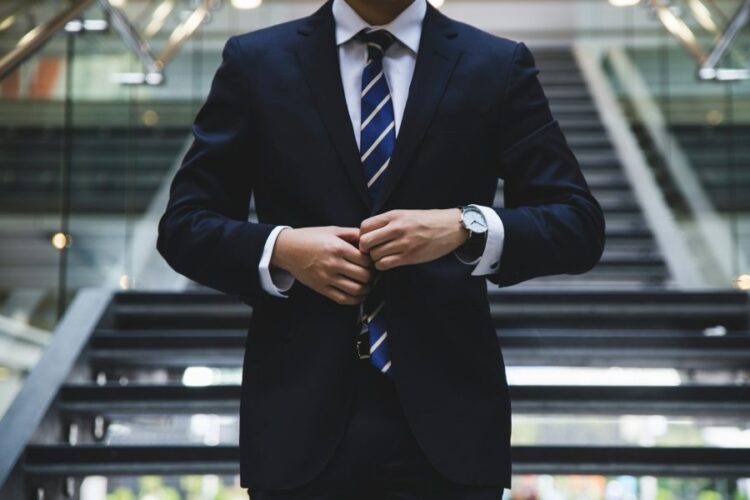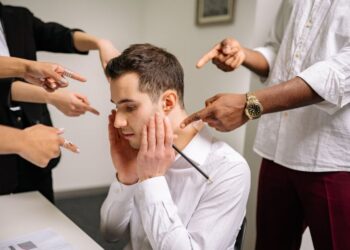The question of “Who paid Casey Anthony’s lawyer?” has intrigued many ever since her high-profile trial captured national attention. Casey Anthony’s case was one of the most sensational legal battles in recent history, with intense media scrutiny and public interest. Understanding who financed her defense team provides insight into the trial’s complexities and controversies. This article delves into the financial arrangements behind Casey Anthony’s legal representation, exploring various theories and the eventual revelation of the funding source. By examining the details, we can better grasp the intricacies of the legal proceedings and the broader implications for high-profile cases.
Who Paid Casey Anthony’s Lawyer?
Jose Baez, Casey Anthony’s primary lawyer, initially took on her case pro bono due to the high-profile nature and potential media exposure. However, the defense team was eventually financed through various means, including the sale of Casey’s photos and videos, a private donor, and contributions from supporters. This financial backing allowed Baez and his team to build a robust defense, ultimately leading to Casey Anthony’s acquittal on most charges. The funding sources have been a subject of much speculation and controversy, reflecting the intense public interest in the case.
Financial Backing For Casey Anthony’s Legal Defense
Understanding who paid for Casey Anthony’s lawyer involves exploring multiple funding sources. Jose Baez, known for his high-profile cases, initially took on Casey’s defense pro bono. However, the case’s complexity and extensive media coverage required significant financial resources.
Baez’s pro bono work highlighted his confidence in the case’s potential to boost his career. The decision to represent Casey without immediate compensation allowed him to focus on building a solid defense. Despite this, the need for additional funds became apparent as the trial progressed.
Various sources contributed to financing Casey’s defense. The sale of Casey’s personal photos and videos generated substantial revenue. These sales were a strategic move, capitalizing on the public’s fascination with the case. Additionally, a private donor provided financial support, ensuring the defense team had the necessary resources.
Contributions from Casey’s supporters also played a role. Public donations and support from individuals who believed in her innocence helped sustain the defense efforts. This multifaceted financial backing allowed Baez and his team to conduct thorough investigations, hire expert witnesses, and present a compelling case in court.
Overall, the combination of these funding sources underscores Casey Anthony’s trial’s complexity and high stakes. The financial arrangements behind her defense reflect the intense public interest and the lengths her legal team went to secure her acquittal.
Detailed Breakdown Of Funding Sources
1. Sale of Photos and Videos
One significant funding source for Casey Anthony’s defense was the sale of her personal photos and videos. These items were sold to media outlets, generating substantial revenue. The public’s fascination with Casey’s life and the trial created a market for these materials, providing critical financial support for the defense.
2. Private Donor Contributions
A private donor also played a crucial role in financing Casey Anthony’s defense. This anonymous benefactor provided funds to support the legal team, ensuring they had the resources needed for a comprehensive defense. The donor’s identity remains unknown, adding an element of mystery to the case’s financial aspects.
3 .Public Support and Donations
Public support and donations contributed to the defense fund. Many individuals who believed in Casey’s innocence or were sympathetic to her situation provided financial assistance. These contributions, though smaller in scale, collectively significantly impacted the defense’s ability to operate effectively.
4. Pro Bono Work by Jose Baez
Jose Baez’s decision to initially represent Casey pro bono was strategic. By offering his services without upfront payment, Baez demonstrated his belief in the case’s potential and his commitment to achieving a favorable outcome. This pro bono work was critical in the early stages of the defense.
5. Media Deals and Licensing Agreements
In addition to selling photos and videos, media deals and licensing agreements provided further financial support. These agreements allowed the defense team to leverage the case’s media coverage, securing funds to cover legal expenses. The media’s interest in the trial created opportunities for financial gain that benefited Casey’s defense.
Financial Contributions And Public Perception
Understanding who paid for Casey Anthony’s lawyer involves examining both the direct financial contributions and the broader public perception of these funding sources. This section explores how the defense team was financed and the public’s reaction to these methods.
Sale of Photos and Videos
Casey Anthony’s defense relied on selling her photos and videos to media outlets for exclusive content. This method, despite controversy, provided crucial financial support and kept the public and media engaged, fueling the sensational nature of the case.
Private Donor Contributions
A private donor, unknown to the public, provided substantial funding to Casey Anthony’s defense team, raising questions about money influence and potential conflicts of interest. Despite these concerns, the donor’s contribution was crucial in ensuring a robust case.
Public Donations and Support
Public support and donations significantly contributed to Casey Anthony’s defense, highlighting the community’s role in high-profile legal cases. Despite some public members’ eager support, others viewed the fundraising efforts with skepticism, highlighting deep divisions in public opinion.
Pro Bono Work by Jose Baez
Jose Baez’s pro bono representation of Casey Anthony demonstrated confidence and commitment to a favorable outcome. This allowed him to focus on building a strong defense without immediate financial constraints, laying the groundwork for a comprehensive legal strategy.
Media Deals and Licensing Agreements
Casey Anthony’s defense utilized media deals and licensing agreements to secure funds in exchange for exclusive content and interviews. These deals not only provided a steady revenue stream but also boosted the public’s perception of the trial as a media spectacle.
Casey Anthony’s defense was funded through various sources, including direct sales, private donations, public support, and strategic media deals, despite mixed public perception, providing insight into high-profile case defense strategies.
Alternative Perspectives On Casey Anthony’s Defense Funding
While the primary funding sources for Casey Anthony’s defense are known, alternative perspectives and theories about the financial arrangements exist. Some speculate that other undisclosed sources may have contributed, reflecting the intense interest and controversy surrounding the case.
One perspective suggests that Casey’s family may have provided financial support. Despite their complicated relationship, the Anthony family had a vested interest in the trial’s outcome. Financial contributions from family members could have supplemented the known funding sources, ensuring a robust defense.
Another theory posits that media outlets might have provided indirect support in exchange for exclusive content. Given the trial’s high-profile nature, media companies were eager for exclusive interviews and materials. These agreements could have included financial arrangements that indirectly supported the defense.
Additionally, some believe that advocacy groups and individuals interested in high-profile legal cases may have contributed. These groups often support defendants in controversial trials, believing in the importance of a fair defense. Such contributions, though less publicized, could have played a role in financing Casey’s legal team.
Legal And Ethical Considerations In Funding High-Profile Defenses
- Pro Bono Representation: Jose Baez’s initial pro bono representation of Casey Anthony raised questions about the ethics and motivations behind such arrangements. While pro bono work is standard, the high-profile nature of this case added complexity.
- Sale of Personal Materials: The sale of Casey’s photos and videos for defense funding led to ethical debates. Critics argued that profiting from personal materials during a criminal trial was inappropriate, while supporters saw it as necessary to secure a fair trial.
- Influence of Private Donors: The involvement of a private donor in funding the defense sparked discussions about the influence of money in legal proceedings. The donor’s anonymous nature raised questions about potential conflicts of interest and the fairness of the trial.
- Public Donations and Support : Public donations to the defense fund highlighted the role of community support in high-profile cases. While these contributions were essential, they also underscored the polarizing nature of the trial and the differing public opinions on Casey’s guilt or innocence.
Steps Taken By Jose Baez To Secure Funding
- Pro Bono Commitment: Jose Baez’s initial decision to represent Casey Anthony without upfront payment was a strategic move to build his reputation and gain media exposure.
- Selling Personal Materials: The defense team capitalized on the public’s interest by selling Casey’s photos and videos, generating crucial funds.
- Securing Private Donations: Baez leveraged connections to secure financial support from a private donor, ensuring the defense had the necessary resources.
- Public Fundraising Efforts: Appeals to the public for donations were made, attracting contributions from supporters who believed in Casey’s innocence.
- Media Agreements: The defense team negotiated media deals and licensing agreements to provide additional financial backing.
- Comprehensive Defense Strategy: These combined efforts allowed Baez to build a robust defense, ultimately leading to Casey Anthony’s acquittal on most charges.
Conclusion
The question “Who paid Casey Anthony’s lawyer?” reveals the intricate and multifaceted nature of funding high-profile legal defenses. From pro bono work to private donations and media deals, various sources ensured Casey Anthony had the resources needed for a comprehensive defense. Understanding these financial arrangements provides deeper insight into the complexities and controversies of the trial, reflecting the intense public interest and the significant stakes involved.
FAQs
Who was Casey Anthony’s primary lawyer?
Jose Baez was Casey Anthony’s primary lawyer, known for his work in high-profile cases.
How did the defense team generate funds?
Funds were generated through selling Casey’s photos and videos, private donations, public support, and media agreements.
Did Casey Anthony’s family contribute to her defense?
There is speculation that Casey’s family may have provided financial support, though this is not publicly confirmed.
What ethical issues were raised by the defense funding?
The funding sources raised ethical questions about the influence of money in legal proceedings and the appropriateness of profiting from personal materials during a trial.










